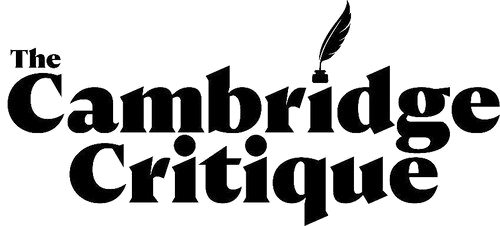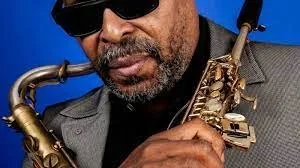WILLIAM BLAKE 'S UNIVERSE AT THE FITZWILLIAM MUSEUM
Frontispiece to Jerusalem - Blake’s hand coloured etchings, in’Visionary forms Dramatic’
Jerusalem - Dark Satanic Mills - Tiger Tiger Burning Bright - our view of William Blake, artist and master engraver is so steeped in Englishness -we seldom go much further. This extravagant exhibition at the Fitzwilliam Museum goes much deeper into his ideas. It was to be called ‘ Blake the European’ - puzzling title for someone who never left Sussex or London but clearer when you discover his ideas were mirrored by German counterparts, whom he never met . Co-curator David Bindman in a brilliantly lucid essay in the catalogue presents our William Blake as an extraordinary millennarian, someone convinced the end of the world was not just nigh but round the next corner. Since the Levellers of the English Revolution, a strong sense of the new heaven and new earth of the Bible prophecies has been the creed of many radical fundamentalist Christians, who took the words of Scripture very literally.
Albion’s Angel rose Europe A Prophecy
As this image of the Pope shows,it involves a deeply held hatred of the established Church of England and a wilder disgust of the the Catholic Church both of whom Blake felt were getting in the way of a true relationship with God. It is troubling to learn Blake was part of the vicious anti-Catholic Gordon riots of 1780, described in Charles Dickens Barnaby Rudge - led by the fanatical deluded Lord Gordon The rioters killed and sacked Catholic houses in London and burned down priceless libraries of prominent families. Hundreds lost their lives. But aside from these passionate prejudices, Blake’s early training at this time had him apprenticed to an engraver. This meant he was, from the outset, a printmaker and, as Esther Chadwick the co curator remarks they remain ‘central to his output, it is no coincidence that most of is best-known works take the form of printed books and engravings.” Clearly this gave him a huge advantage and as he hand coloured many of his prints enabled his work to circulate widely in a way other artists could only dream of and presumably envy. In 1779 he left his training for a rare chance to train at the Royal Academy of Arts, There engraving ‘ was regarded as a secondary art form’ and I infer that Blake and his fellows felt slighted and undervalued there among the aristocratic artists of the conventional Sir Joshua Reynolds who ran it. Nevertheless the training was rigorous ,using casts from statues from antiquity ( I think many are still there) he became an accomplished artist and his skill in portraying the male nude. But he felt more and more marginalised by the RA style , James Barry and Henry Fuseli ( a very strange and deranged individual despite his skill) all believed art could not be trained but was divinely inspired.
The first section of the exhibition shows his classical work but moves in the second part to his more visionary revolutionary inspiration. His central idea rejected the Enlightenment. In hiis famous monotype of Newton crouched over his mathematical work, Blake showed - or so he thought - his abhorrence of the great man’s endeavours - his Newton hunched over on the sea floor, ignores the great universe around him , focussed as he is on his theories, ideas Blake frankly despises. Imagination in the Christian spirit of belief in Christ should be the real concern of the artist.Newton’s Principia might have established the laws of motion and universal gravitation , his Opticks the behaviour of light, but increasingly this counts for nothing next to the fire of the imagination and belief in the destruction of the world and the reality of the Apocalypse.
Blake’s version of the Pale Horse one of the famous Four Horseman who will herald the Apocalypse.
America A Prophecy. plate 12. 'Thus wept the Angel voice' 1793-1821. Blake, William (British, 1757-1827).
7).
Blakes’ revolutionary period, both the American and French revolutions were part of his growing up, was shot through with his mystical material and.it hard to work out what exactly he thought about the scourges he saw arrive in the world. The illustration above seems to lionise with relish the advent of war with its heroic Viking style hero atop a flamboyant steed. But he also appears to have sympathy with the slaves of Haiti and their rebellion, Blake’s obsession is more concerned with the eschatology of the Divine rather than the struggles of mankind. so many of the images are frightful or of horrifying suffering hard to place in any universe of a loving God. In fact his own cast of characters who double as Christ God and Satan are so muddled it is frankly exasperating .
Finally the Apocalyptic era of his work the third section in the exhibition sees Blake let rip with some of the most way out of his realisations of the slightly unhinged St. John , who to be fair to him had been half starved on the island of Patmos and in conflict with the cruelty of the Roman Empire. some of the monsters and manifestations of the Devil are frightening and I would suggest not at all suitable for children. Talented inspired in a perverse way, it seems to me the fundamentalism of his narrow Biblical upbringing comes to haunt the work and most of it to a modern eye is disturbing .
This exhibition is very stimulating. It truly does review Blake the patriot and reveal his imagination , but much of that is very hard to even imagine.
I actually like his poems better. It was hard to discover much about Blake the man here. Was he happily married? Or homosexual - there are no women in the illustrations beyond the ethereal attenuated angel figures ? Not a single female breast for one so keen on nudity? The visions cloud the scene and the theories often confuse and dismay. But what a tour de force and the work of other similar artists is interesting for anyone who wants to delve deeper into the metaphysics of these artists. I actually do not.










